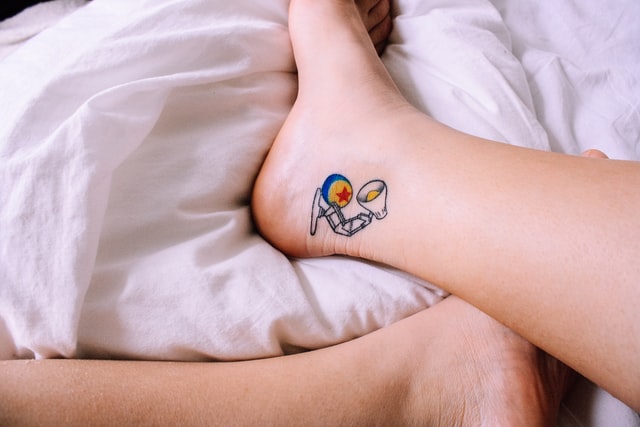If you’re on the lookout for an informative guide to treating athlete’s foot with essential oils the natural way, look no further.
Whether you’re a seasoned consumer or just delving into the expansive essential oil and aromatherapy fields, it’s always good to absorb the latest in new research and discoveries, including how best to take advantage of the health benefits of essential oils and the role they can play in the treatment of various ailments.
In this post, we’ll discuss all of the key essential oils used to treat athlete's foot, and how best to use them to garner positive results.
What Is Athlete’s Foot?
Athlete’s foot (Tinea pedis), despite the name, is a fungal infection that can spread to multiple areas along the body. It causes a red rash and dry, itchy, scaly skin that usually starts between the toes. It’s most often the result of wearing sweat dampened shoes and socks (like athlete’s tend to have), and can be easily spread by touch to other parts of the body, the floor, or clothing making it highly communicable.
One of the most studied aspects of essential oils as they relate to health and wellness are their astounding anti fungal and antibacterial properties. As such, there are many that are successfully used to treat fungal infections, including athlete’s foot!
These oils' potential to positively affect skin problems like itching and infections through their antimicrobial properties is tremendous.

Athlete's Foot Treatment
There are, of course, prescription and over the counter antifungals utilized in the treatment of athlete’s foot. However, studies have shown a distinct increase in the use and acceptance of complementary and alternative medicine (CAM) by the general populace. People are more and more looking to pursue natural remedies where possible in a push toward clean living and sustainability.
Being that essential oils fall into this category, it is no wonder the field is growing rapidly. These are oils extracted from plants found in nature and known for their therapeutic properties. While essential oils as a whole have characteristics that can be attributed across the board, they have just as many distinguishing qualities. For this reason, it’s good to learn which essential oils are best suited to treat a particular condition.
Before using essential oils to treat any skin condition, it is important to speak with your healthcare provider about whether or not this is safe for you. Essential oils can sometimes be irritating and can make the skin more sensitive to certain other topicals or the sun.
The following are the top oils used to treat athlete’s foot:
- Tea Tree (Melaleuca alternifolia)
- Lavender (Lavendula angustifolia)
- Eucalyptus (Eucalyptus globulus)
- Geranium (Pelargonium graveolens)
- Lemon (Citrus limon)
- Lemongrass (Cymbopogon flexuosus)
- Clove (Eugenia caryophyllata)
All of these oils are produced in plant organs and have complex chemical structures that work to attack foreign pathogens to keep the plant healthy. These same properties work after extraction from the plant and continue to act as natural antimicrobials, helpful for treating athlete's foot.
Try MOXĒ Breathe Blend which includes tea tree, lavender and eucalyptus all in one!
Tips For Treating Athlete’s Foot With Essential Oil
- Apply twice a day for best results. Try to apply under aseptic conditions to reduce the chance of the chance of the fungal infection getting worse.
- Keep the area dry. Make sure to keep your feet dry, and switch out socks or shoes throughout the day to air out your feet.
Make sure your oil is 100% pure essential oil and not a blend before you make any further dilutions in carrier oil. All of these oils can help to treat different skin ailments but the most well known and commonly used oil for athlete’s foot treatment in particular is tea tree oil.
Tea tree oil is popular for its antibacterial, anti fungal and anti inflammatory capabilities.
A blind study conducted by the dermatology department at Royal Prince Albert Hospital in New South Wales saw participants who were given tea tree essential oil for athlete’s foot improve in symptoms at a rate equal to the group given the antifungal drug and significantly better than the placebo group. However, it also showed no significant improvement in the mycological load at the end of the study as compared to the antifungal drug. This means that while it hasn’t been scientifically proven to help cure athlete’s foot, it does well to relieve the symptoms of it.

How To Safely Apply Essential Oils To Skin
Essential oils are incredibly potent, often volatile compounds that can irritate the skin and even cause burns if applied directly. You should always dilute any essential oil in a carrier oil before using it on your skin. Read more about how to dilute essential oils for skin application.
Conclusion
The bottom line: dealing with athlete’s foot can be a painful, irritating, and embarrassing experience that’s best resolved quickly and with little fuss, so treating it with readily available and effective essential oils is a good option. Unfortunately, everyone is different and this natural remedy may not work for everyone. Talk to your doctor if the infection persists to get the right treatment for you.

